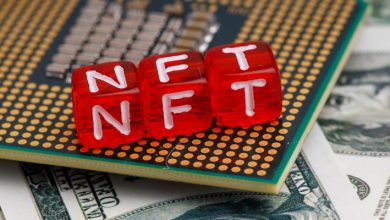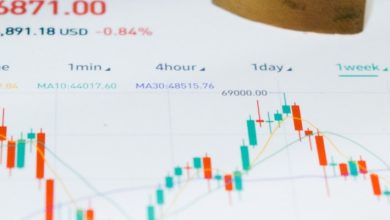Advanced Trading Strategies for Crypto Markets

- Understanding Market Trends and Patterns
- Utilizing Technical Analysis for Better Decision Making
- Implementing Risk Management Techniques in Crypto Trading
- Exploring Algorithmic Trading Strategies for Crypto Markets
- Diversifying Your Portfolio with Advanced Trading Techniques
- Staying Ahead of the Curve with Real-time Data Analysis
Understanding Market Trends and Patterns
Understanding market trends and patterns is crucial for success in the crypto markets. By analyzing historical data and identifying recurring trends, traders can make informed decisions about when to buy or sell their assets. Here are some key points to consider when studying market trends:
- **Historical Data Analysis:** One of the most effective ways to understand market trends is to analyze historical data. By looking at past price movements and trading volumes, traders can identify patterns that may indicate future price movements.
- **Technical Analysis:** Technical analysis involves studying charts and using mathematical indicators to predict future price movements. Traders can use tools like moving averages, RSI, and MACD to identify trends and make informed decisions.
- **Market Sentiment:** Market sentiment plays a significant role in determining price movements in the crypto markets. By monitoring news, social media, and forums, traders can gauge the overall sentiment of the market and adjust their strategies accordingly.
- **Risk Management:** Understanding market trends also involves managing risk effectively. Traders should set stop-loss orders, diversify their portfolios, and avoid investing more than they can afford to lose.
By staying informed about market trends and patterns, traders can increase their chances of success in the highly volatile crypto markets. It is essential to continuously analyze data, stay updated on market news, and adapt strategies to changing market conditions.
Utilizing Technical Analysis for Better Decision Making
When it comes to making informed decisions in the crypto markets, utilizing technical analysis can be a valuable tool. Technical analysis involves studying past market data, primarily price and volume, to forecast future price movements. By analyzing charts and patterns, traders can gain insights into potential market trends and make more strategic trading decisions.
One of the key benefits of technical analysis is its ability to help traders identify entry and exit points for trades. By recognizing patterns such as support and resistance levels, trend lines, and moving averages, traders can better time their trades to maximize profits and minimize losses. Additionally, technical analysis can provide valuable information about market sentiment and investor behavior, helping traders anticipate market movements.
Another advantage of technical analysis is its versatility across different timeframes. Whether you are a day trader looking to make quick profits or a long-term investor seeking to capitalize on market trends, technical analysis can be applied to various trading strategies. By combining technical analysis with fundamental analysis, traders can develop a comprehensive trading plan that takes into account both market data and external factors.
Implementing Risk Management Techniques in Crypto Trading
When it comes to crypto trading, implementing risk management techniques is crucial for success in the volatile crypto markets. By effectively managing risks, traders can protect their investments and minimize potential losses. Here are some advanced strategies to help traders navigate the risks associated with crypto trading:
- Diversification: One of the most effective ways to manage risk in crypto trading is through diversification. By spreading investments across different cryptocurrencies, traders can reduce the impact of a single asset’s price fluctuations on their overall portfolio.
- Stop-loss orders: Setting stop-loss orders can help traders limit their losses by automatically selling a cryptocurrency once it reaches a certain price. This can prevent emotional decision-making and protect investments from significant downturns.
- Position sizing: Properly sizing positions based on risk tolerance and portfolio size is essential in crypto trading. By not overexposing oneself to a single cryptocurrency, traders can better manage potential losses.
- Technical analysis: Utilizing technical analysis tools can help traders identify trends and patterns in crypto markets, allowing them to make more informed decisions. This can help reduce risks associated with unpredictable price movements.
- Stress testing: Conducting stress tests on a crypto trading strategy can help traders understand how it performs under different market conditions. By identifying weaknesses, traders can make adjustments to better manage risks.
Overall, implementing these risk management techniques can help traders navigate the complexities of crypto markets and improve their chances of success in crypto trading.
Exploring Algorithmic Trading Strategies for Crypto Markets
When it comes to algorithmic trading strategies for crypto markets, there are several approaches that traders can explore to maximize their profits. These strategies involve using mathematical models and algorithms to make trading decisions based on historical data and market trends.
One popular algorithmic trading strategy is mean reversion, which involves identifying assets that are overbought or oversold and taking advantage of price corrections. Another strategy is momentum trading, where traders capitalize on the continuation of an existing trend in the market.
Arbitrage is another common strategy in the world of algorithmic trading, where traders exploit price differences of the same asset on different exchanges. This strategy requires fast execution and a deep understanding of market dynamics.
Machine learning algorithms have also become increasingly popular in developing trading strategies for crypto markets. These algorithms can analyze vast amounts of data to identify patterns and make predictions about future price movements.
Overall, exploring algorithmic trading strategies for crypto markets can be a lucrative endeavor for traders looking to automate their trading decisions and take advantage of the fast-paced nature of the cryptocurrency market.
Diversifying Your Portfolio with Advanced Trading Techniques
When it comes to diversifying your portfolio in the crypto markets, utilizing advanced trading techniques can be highly beneficial. By incorporating these strategies, you can optimize your investment portfolio and minimize risks. Here are some advanced trading techniques to consider:
- Arbitrage Trading: This involves taking advantage of price differences of a cryptocurrency on different exchanges. By buying low on one exchange and selling high on another, you can profit from the price differential.
- Margin Trading: With margin trading, you can leverage your investment by borrowing funds from a broker. This allows you to trade with more capital than you actually have, potentially increasing your profits.
- Algorithmic Trading: This involves using algorithms to automatically execute trades based on predefined criteria. Algorithmic trading can help you take advantage of market trends and make trades at optimal times.
- Swing Trading: Swing trading involves holding cryptocurrencies for a short to medium-term period, taking advantage of price swings. This strategy requires technical analysis to identify potential entry and exit points.
By incorporating these advanced trading techniques into your investment strategy, you can diversify your portfolio and potentially increase your profits in the crypto markets. However, it is important to thoroughly research and understand each strategy before implementing them to ensure you are making informed trading decisions.
Staying Ahead of the Curve with Real-time Data Analysis
Real-time data analysis is crucial for staying ahead of the curve in the fast-paced world of crypto markets. By utilizing advanced tools and technologies, traders can gain valuable insights into market trends and make informed decisions in real-time.
One key benefit of real-time data analysis is the ability to identify emerging patterns and trends before they become widely known. This allows traders to capitalize on opportunities before the market has fully reacted, giving them a competitive edge.
Furthermore, real-time data analysis enables traders to react quickly to sudden market shifts and fluctuations. By monitoring key indicators in real-time, traders can adjust their strategies accordingly and minimize potential losses.
Overall, incorporating real-time data analysis into trading strategies can help traders navigate the volatile crypto markets more effectively and make better-informed decisions. By staying ahead of the curve with real-time insights, traders can increase their chances of success in this rapidly evolving landscape.



